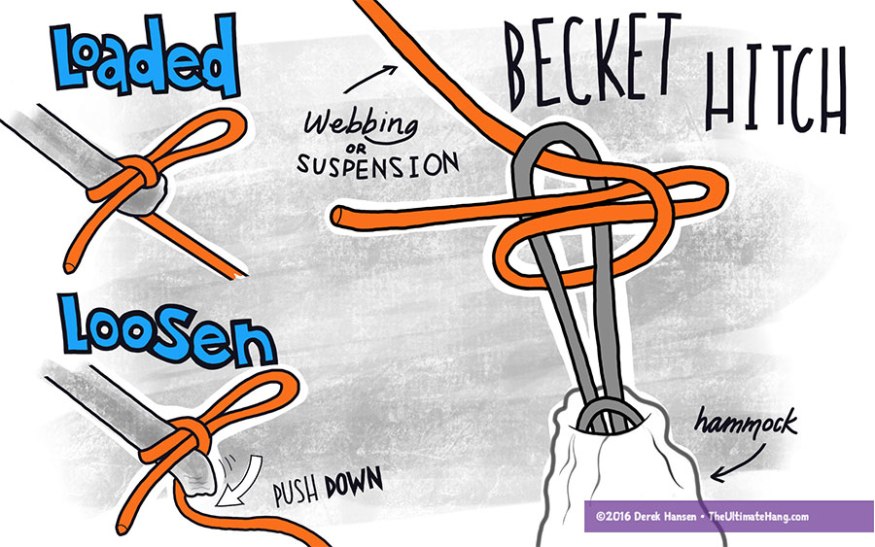I came across the Becket Hitch while researching hammock styles for my book. At first I dismissed it as antiquated and not suited for modern hammocks, but it has since become my favorite way to connect a hammock suspension to an anchor point. It is simple enough to tie that even beginners are able to pick it up fairly quickly yet robust enough for veterans to use regularly. In addition to being easy to learn, it is light, requiring no extra hardware; it is simple, requiring no toggles or special alignment like the Marlinspike hitch; it is easily adjustable; it doesn’t bind; and it unties quickly.
The Becket Hitch has been around for a long time and has been used with hammocks since pre-Columbian days. If you ever visit South America you’ll see this hitch used almost exclusively to hang hammocks. Locally it is simply referred to as the “hammock knot.”
Scouters might recognize this as the Sheet Bend, but there is one subtle difference: a sheet bend takes a bend or loop created in the fabric where the Becket Hitch uses a fixed eye loop. This difference is why the Ashley Book of Knots distinguishes it with a different name, but they work the same.
You can tie the Becket Hitch with rope or webbing, anchor side or hammock side, depending on how your hammock is configured. Where I find this works the best is with a long webbing strap that acts as both tree protection and suspension line.
One word of caution: this hitch works best with webbing or sheathed rope. Certain combinations of thin or smooth cordage such as Amsteel, Spectra, or Dyneema are prone to slipping, although can hold with double or triple wraps, but this can make it harder to tie and untie, thus defeating the hitch’s usefulness.






Leave a Reply